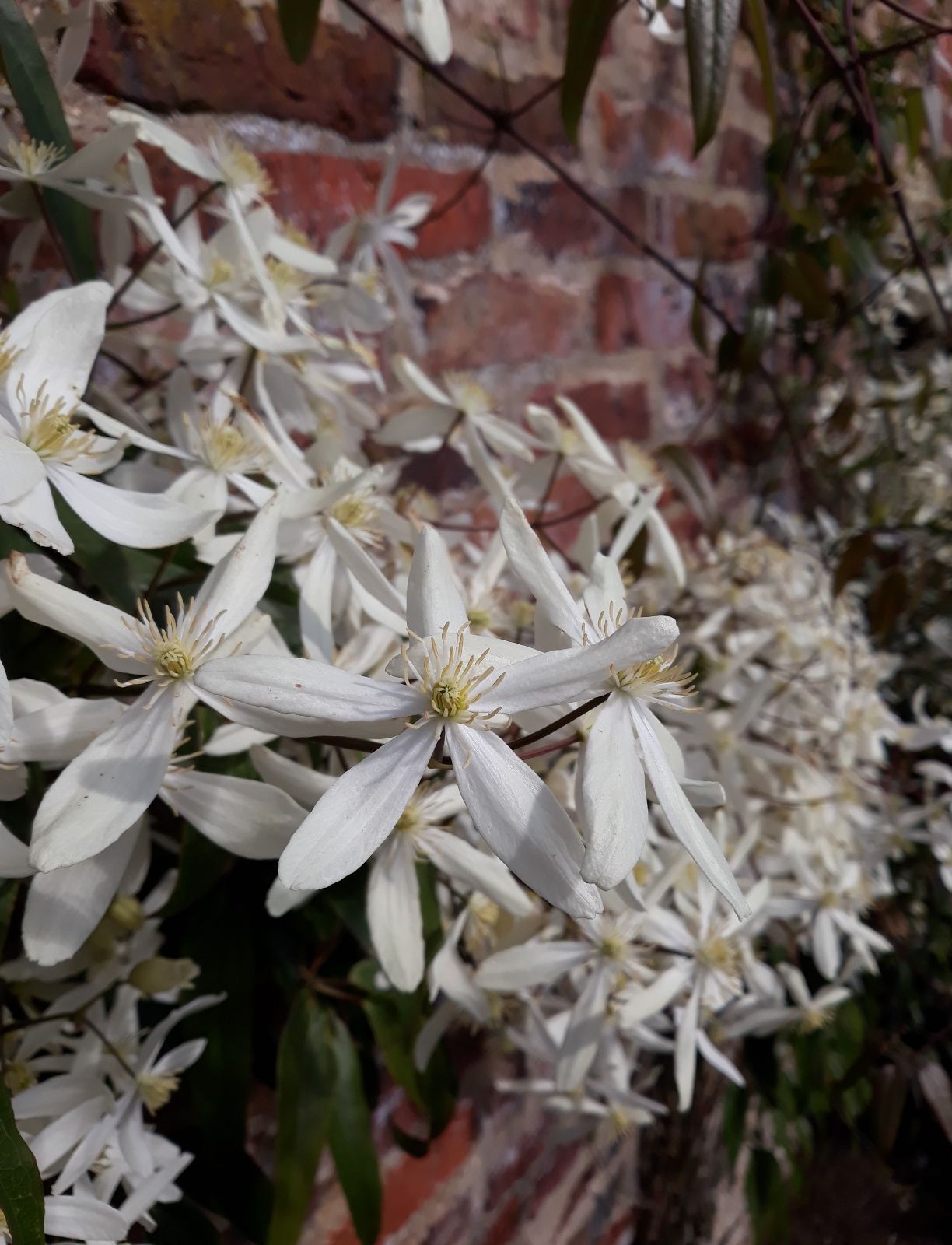Clematis armandii
Credits
Article from Bean's Trees and Shrubs Hardy in the British Isles
Recommended citation
'Clematis armandii' from the website Trees and Shrubs Online (treesandshrubsonline.
Genus
Other taxa in genus
- Clematis acutangula
- Clematis aethusifolia
- Clematis afoliata
- Clematis akebioides
- Clematis alpina
- Clematis apiifolia
- Clematis × aromatica
- Clematis campaniflora
- Clematis chinensis
- Clematis chrysocoma
- Clematis cirrhosa
- Clematis connata
- Clematis crispa
- Clematis × durandii
- Clematis × eriostemon
- Clematis fargesii
- Clematis finetiana
- Clematis flammula
- Clematis florida
- Clematis fusca
- Clematis gracilifolia
- Clematis grata
- Clematis heracleifolia
- Clematis integrifolia
- Clematis × jackmanii
- Clematis × jouiniana
- Clematis lanuginosa
- Clematis lasiandra
- Clematis ligusticifolia
- Clematis macropetala
- Clematis maximowicziana
- Clematis meyeniana
- Clematis montana
- Clematis nannophylla
- Clematis napaulensis
- Clematis orientalis
- Clematis paniculata
- Clematis patens
- Clematis phlebantha
- Clematis pitcheri
- Clematis quinquefoliata
- Clematis ranunculoides
- Clematis rehderiana
- Clematis serratifolia
- Clematis songarica
- Clematis stans
- Clematis tangutica
- Clematis texensis
- Clematis tibetana
- Clematis uncinata
- Clematis × vedrariensis
- Clematis verticillaris
- Clematis viorna
- Clematis virginiana
- Clematis vitalba
- Clematis viticella
An evergreen, woody climber, growing 20 to 30 ft high, stems minutely downy when quite young. Leaves composed of three leaflets, which are oblong-lanceolate to ovate, rounded or slightly heart-shaped at the base, pointed, not toothed, prominently three-veined, of a rich glossy green, and quite glabrous on both surfaces; they vary from 3 to 6 in. in length, and from 1 to 21⁄2 in. in width; the main-stalk is 11⁄2 to 4 in. long, the secondary ones 1⁄2 to 1 in. long and twisted. Flowers 2 to 21⁄2 in. across, produced in April in dense axillary clusters, mostly three on a stalk; sepals four to seven, narrow oblong; about 1 in. long, 1⁄3 in. wide, pure or creamy white, changing to rose. The bases of the flower-stalks are surrounded by numerous bracts. Bot. Mag., t. 8587.
Native of Central and W. China; introduced by Wilson for Messrs Veitch in 1900, and first flowered by them in their nursery at Coombe Wood. The plant described above is representative of the selected forms of C. armandii grown in gardens, of which ‘Apple Blossom’ is the best known. Rehder has pointed out that the wild species, as Franchet described it, has smaller flowers with less numerous sepals, borne on separate leafy peduncles. Garden plants with the characters given in the previous paragraph (flowers 2 to 21⁄2 in. across, with four to seven sepals, borne in a sessile, leafless inflorescence of paniculate form) are by him distinguished as var. biondiana (Pav.) Rehd.
In its selected forms this is a most beautiful clematis. It is not particularly hardy and succeeds best if allowed to grow freely on a sunny wall. No pruning is necessary or desirable unless it outgrows its allotted position. It also resents too close training; once the main framework of branches has been tied in the plant should be allowed to grow with the minimum of interference.

